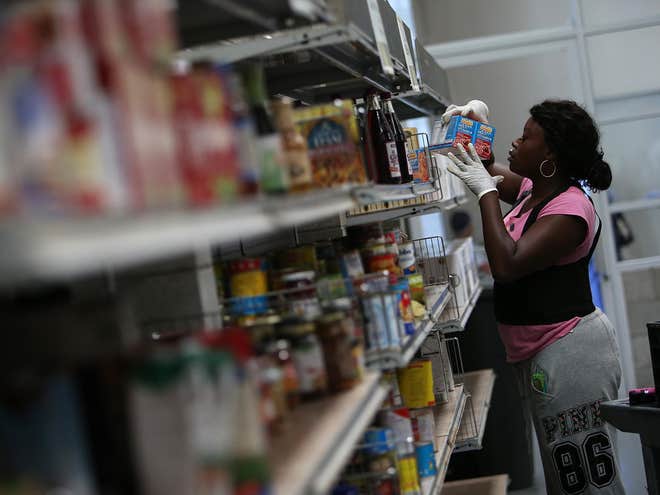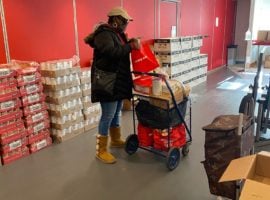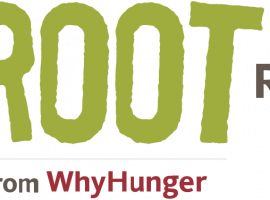Back in April, Governor Andrew Cuomo shared a Tweet in which he referred to the coronavirus as “the Great Equalizer.” He was not the only one; Madonna used the same phrase in a video to her fans. This arguably represented the attitude toward the pandemic in its early days- we’re all in it together. With states issuing health recommendations to the public to social distance and wear a mask, it seemed that everyone would have to incur the same disruptions to their everyday lives. Yet not everyone would be working from home or stockpiling groceries and supplies. The coronavirus pandemic is a major historical event that we are facing collectively. In theory, everyone is equal in that we are all at risk of contracting the virus. Yet, as we have seen over the last several months, the virus has impacted marginalized groups far more acutely.
In March, Sen. Elizabeth Warren and Rep. Ayanna Pressley wrote a letter to the Secretary of Health and Human Services calling out the lack of racial data on coronavirus infection rates. The CDC has since begun tracking racial data and has found that Black people are infected, hospitalized, and dying due to the coronavirus at disproportionately higher rates. In fact, Black people are 5 times more likely to be hospitalized due to the coronavirus than white people. The disparities in infection rates are the result of several compounding factors such as access to healthcare, access to healthy and nutritious food, housing conditions and employment. So, while in theory the coronavirus could infect anyone, in practice it exposes broader racialized disparities in public health and exposes the ways in which Black communities are exposed to systemic violence on a daily basis.
The racial disparities in Covid-19 infection rates directly mirror the racial disparities in access to nutrition. Access to healthy and nutritious food has long been a racialized issue in the U.S. While Black communities tend to have lower neighborhood income, this isn’t the only factor impacting lack of access to healthy food. “Food Deserts” is the term that has long been used to describe areas that lack access to establishments selling fresh produce. “Food Deserts” are often associated with Black neighborhoods, yet the simple lack of grocery stores selling healthy food in a certain neighborhood does not encapsulate the more structural nature of the issue. “Food Apartheid,” a term coined by farmer and food justice activist Karen Washington, more accurately summarizes the nature of the problem: it is not merely an issue of geographic proximity to healthy food, but rather one of the racial inequities throughout our entire food system. Black farmers have been denied access to land and resources, fast-food corporations have strategically targeted Black neighborhoods, and grocery stores have long used strategies of price discrimination.
Frances Perez-Rodriguez is a community organizer and manager at South Bronx community farm La Finca Del Sur and tells us about the nutritional disparities she has experienced in her community. “We are very clear that people in our community suffer, disproportionately, from food insecurity, or, inconsistent meals and access to fresh and healthy foods. We know that our subway stations have more advertisements for processed junk foods than the stations in white, middle class neighborhoods. We move through the world recognizing that sharing space with the Hunts Point Food Distribution Center, the world’s largest, hasn’t guaranteed us food, but instead, pollution inequity and disproportionately high rates of asthma. We saw all the white folks move to Harlem, the Whole Foods open, and the Pathmark close,” explains Rodriguez.
A report by the White House Conference on Food, Nutrition, and Health has found that diet is the number one cause of poor health in the U.S. today. Medical professionals have agreed that populations with poor diet and compromised metabolic health are more susceptible to contracting and becoming ill from the coronavirus. Dr. Dariush Mozaffarian, Dean of the Freidman School of Nutrition Science and Policy at Tufts University tells the New York Times that poor metabolic health hinders immune function and intensifies inflammation- one of the primary effects of COVID-19.
The other factors causing racial disparities in COVID infection rates relate to housing and employment conditions that make it difficult to practice shelter-in-place and social distancing recommendations. Black people are more likely to live in higher density neighborhoods. Living in closer proximity with people makes it more difficult to limit the people you are exposed to on a daily basis. Furthermore, Black people are overrepresented in essential service jobs, meaning that more Black people must continue to go into work and face the risk of infection (despite the ironic fact that these “essential” jobs are usually the most underpaid and come with the least healthcare benefits).
COVID-19 has also resulted in expanded policing of Black communities, explains Rodriguez. “DeBlasio gave the police the green light to enforce social distancing at one point, in other words, creating opportunities for even more police brutality in neighborhoods already over-policed. On top of this, thousands of cops tested positive for the virus and they don’t all wear masks. Are people in the suburbs or the Upper West Side of Manhattan being over-policed and brutalized by the cops during a global pandemic? No, they’re being allowed to hang out outside of bars and day drink while the cops look on, silently, and from a distance. So, not only are Black folks especially vulnerable to the virus because of disproportionately high pre-existing health conditions, lack of access to health care, and so many of us being essential workers, we also have to deal with being over-policed.” Widespread instances of police brutality and the murders of Black people at the hands of police have sparked a global resurgence of the Black Lives Matter movement and brought to the mainstream calls to defund the police; such a call, in the face of other highlighted racial disparities, would create an opportunity not to completely take away funded resources from law enforcement, but rather divert & reallocate those resources into critically underfunded social services such as housing, healthcare, food services, and education.
Throughout all of this, Black communities are coming together to provide the assistance and services that have not been provided by the government during the crisis. “Folks are taking care of and fighting for one another. I’m a member-owner of Woke Foods, an Afro-Dominican plant-based food service co-op, and we’re just one of so many groups distributing free meals to our people right now. From folks doing it straight out of their homes and with the help of a few friends, to larger scaled efforts coming out of community organizations, restaurants, and miscellaneous groups,” explains Rodriguez.
Coronavirus has not proven to be the “great equalizer” that many predicted. On the contrary, it has disproportionately impacted Black communities and only highlights pre-existing health inequities. In addition to reforming healthcare access, a racially and socially just approach to public health must consider the broader environmental factors that relate to health, such as access to healthy food and housing and working conditions. When we consider it is primarily Black and Brown people who must expose their bodies to disease for the benefit of a predominantly white work-from-home class, we can begin to understand the Covid-19 pandemic in terms of racial violence. To perceive something as violence, we often look for a perpetrator and victim; yet in the case of the Covid-19 pandemic, perpetrator and victim are harder to identify. Instead, we should seek to identify how and why Black and Brown people are denied access to employment, wealth accumulation, housing, nutritious food and healthcare, and how others benefit as a result. When social complicity in propagating a system of racial violence is truly realized, we then can truly work to equalize the playing field and can create lasting change for all.





